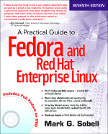
Derby City Flavor
At last! Another vape review!
Derby City Flavor was kind enough to send me a few samples for review. In the interest of full disclosure, they sent the samples free of charge for review purposes. I vaped the samples using cartomisers, iClear30S and Protanks, on a variety of different regulated mods. I am not really a “dripper”, but a dedicated day to day vaper and I appreciate e-juices that are tankable, like these, however, Derby City Flavor does state on their website that they will be happy to mix blends suitable for drippers as well. Just ask them 😉
Derby City Flavor sent me 5 7mil sample bottles of juice, a couple stickers (nice touch) and some literature. My initial impressions are always about the actual bottles, and in this case, they are glass, with glass drippers and beautifully printed labels. This, to me is impressive and I cannot stress how much this smacks of care, pride and quality. All the absolute top e-liquid vendors present their wares this way and for good reason. These types of bottles are more durable, better looking, more functional and easier to use, and will never impart any rubbery or plasticy taste to the juice. My ONLY caution about these particular bottles is they do not have child safety caps, so when you order from Derby City Flavor, as you will want to, make sure to lock your juices away securely from curious little fingers.
Now down to the juices. The reason I was so excited for these to arrive is that one of my all-time favorite drinks is chai-tea, and that was one of the flavors they were sending. Of course, this was the very first one I loaded up. Mandvi Chai Tea. I was initially pretty disappointed in it (hear me out). This did NOT taste like chai-tea to me. In fact, it took me almost an entire tank to figure out what it was. You’ll notice I just said I vaped a tank, well, just because I said it didn’t taste chai to me, doesn’t mean it wasn’t strangely addictive. It was a very earthy taste with a strong but familiar “something” spice. Turns out that spice was the clove, which didn’t occur to me until almost after a full tank. I used to smoke cloves when I was younger so the taste was just familiar enough to bug me until I figured it out. This is where the story gets odd though. By coincidence, I had to run off to tend to some family business for an extended period and didn’t restart my taste testing in earnest for almost a month. I loaded the chai back up for some of that yummy clove and behold! It’s MUCH more chai now. I guess this is just a lesson on steeping? Anyway, the website describes this juice as:
Mandvi Chai Tea – From the ancient port of Mandvi on the Arabian Sea, Derby City Flavor brings the sultry flavors of India. Our mystifying blend of spices evokes the meeting of the maritime spice trade and the camel caravans bearing spices more precious than gold. Experience an exotic treasure, heady with cardamom, ginger, and cinnamon.
I think it is a very earthy very clovey mixture, with a decent hint of chai, and it’s also quite good (let it steep).
Next up was the Raspberry Linzer Macaroon which the website describes as:
Raspberry Linzer Macaroon – Like the now-famous Linzer torte, our Austrian-inspired elixir marries the sweet fruity notes of raspberries with the soft warmth of almond for a delicate and sophisticated treat. Rumor has it Mozart himself favored such treats!
This one smells so good from the bottle you’ll want to just drink it. It’s a very warm and earthy, almost spiced flavor (perhaps it’s a bit of that almond taste) with just the slightest hint and after-vape lip taste of cooked raspberries. Sort of a naturally sweet taste and not like artificial raspberry candies.
On to Moroccan Mint Tea which says:
Moroccan Mint Tea – Mint tea is prized in the heat of Morocco for the refreshing cool the mint provides, and its preparation for honored guests is an ancient and noble tradition. Enjoy our version of this soothing treat in an elixir that evokes the cool of shade after the desert sun. You don’t even need to wait for guests!
And this one is right on and delicious. I can taste the fresh mint and a black tea behind it. This is good stuff!
Next was Phu-ket Mango Lychee described as:
Phu-ket Mango Lychee – The rich sweetness of mangoes from the steamy jungles of Thailand, balanced by an exotic twist of lychee, combine to bring you a flavor unlike any other. Let our elixir take you to a land of wonder.
I like this and I am not really a lychee fan, but I think this is really done right. That balance with the mango makes this an exotically fruity adventure for your palate. There is something snappy about this one that makes it really a pleasure to vape.
Last but certainly not least is the Cuba Libre which says:
Cuba Libre – A patriot’s drink, this classic celebrates the heroic spirit of the freedom-fighter. Our elixir captures this independent spirit along with the traditional blend of sweet cola, heady tropical rum, and a refreshing dash of cooling lime. Celebrate your own independence!
Now I guess I am not much of a drinker because I had never heard of such a drink before and, as a general rule of thumb I do NOT read the descriptions on the bottles or websites before sampling the juices because I believe that can cloud my impressions. This one not only had me stumped but it was ABSOLUTELY FREAKING DELICIOUS. I still cannot put it down. It took both me and my wife 2 days to figure out that it was a cola flavor base. I have never had a “good” cola flavored juice before. Just amazing. I am sure that most of you, as vapers, have heard or experienced “vapor tongue”, a phenomena which briefly causes your e-juice to taste somewhat like wet cardboard. Most people resort to candies and things to get that to subside but THIS juice is the cure. The lime in this just cuts right through your vapor tongue. It’s a treat!
Well, there you have it folks! Derby City Flavor has 3 different series of juices and all of these except the Cuba Libre were from their Ports Of Call series with the Cuba Libre being from their Caribbean Indulgence series. They offer juices in 0, 6 or 12mg nic in 7, 15 or 30ml sizes (buy the 30s you’ll like the juice). Prices at a very reasonable $7, $11 and $19 respectively. Their stuff is just delicious so go and order some and you’ll be glad you did!





